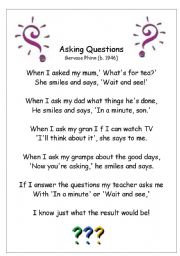
More value in calories- sustaining health etc.Īvoiding light exercise, unnecessary expenses incurred, rash driving may result in accident In terms of excessive calories-upset stomach, in-digestion

One sample answer is given below : Choices Think about choices you make on a daily basis, and the importance of these choices.Īnswers to this question may vary from student to student since the question involves personal liking or disliking. Sometimes the choices we make have far-reaching consequences. NCERT Solutions for Class 9 English Literature Chapter 7 The Road Not Taken Here we have given NCERT Solutions for Class 9 English Literature Chapter 7 The Road Not Taken. GradeSaver, Web.NCERT Solutions for Class 9 English Literature Chapter 7 The Road Not Taken are part of NCERT Solutions for Class 9 English. "Robert Frost: Poems “The Road Not Taken” (1916) Summary and Analysis".
#Robert frost poem the road not taken questions and answers how to
Next Section "The Sound of the Trees" (1916) Summary and Analysis Previous Section "Out, Out" (1916) Summary and Analysis Buy Study Guide How To Cite in MLA Format Vincent, Caitlin. Of course, the excuse that he took the road “less traveled by” is false, but the narrator still clings to this decision as a defining moment of his life, not only because of the path that he chose but because he had to make a choice in the first place. Yet, as an old man, the narrator attempts to give a sense of order to his past and perhaps explain why certain things happened to him. During the first three stanzas, the narrator shows no sense of remorse for his decision nor any acknowledgement that such a decision might be important to his life. It is only as an old man that the narrator looks back on his life and decides to place such importance on this particular decision in his life. In terms of beauty, both paths are equally “fair,” and the overall “…passing there / Had worn them really about the same.” When he first comes upon the fork in the road, the paths are described as being fundamentally identical. The narrator only distinguishes the paths from one another after he has already selected one and traveled many years through life. However, when we look closer at the text of the poem, it becomes clear that such an idealistic analysis is largely inaccurate. Rather than taking the safe path that others have traveled, the narrator prefers to make his own way in the world. Moreover, the narrator’s decision to choose the “less traveled” path demonstrates his courage. This reading of the poem is extremely popular because every reader can empathize with the narrator’s decision: having to choose between two paths without having any knowledge of where each road will lead.

The narrator decided to seize the day and express himself as an individual by choosing the road that was “less traveled by.” As a result of this decision, the narrator claims, his life was fundamentally different that it would have been had he chosen the more well-traveled path.

Since its publication, many readers have analyzed the poem as a nostalgic commentary on life choices. This poem is made up of four stanzas of five lines, each with a rhyme scheme of ABAAB.Īlong with “Stopping by Woods on a Snowy Evening,” this poem is one of Frost’s most beloved works and is frequently studied in high school literature classes. The narrator ends on a nostalgic note, wondering how different things would have been had he chosen the other path.

However, he realizes that it is unlikely that he will ever have the opportunity to come back to this specific point in time because his choice of path will simply lead to other forks in the road (and other decisions). After choosing one of the roads, the narrator tells himself that he will come back to this fork one day in order to try the other road. He considers both paths and concludes that each one is equally well-traveled and appealing. The narrator comes upon a fork in the road while walking through a yellow wood.


 0 kommentar(er)
0 kommentar(er)
